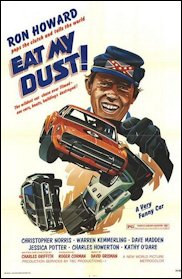 By Peter Galuszka
By Peter Galuszka
Protests are picking up against plans to convert a liquefied natural gas shipping facility on Maryland’s western shore of the Chesapeake Bay at Cove Point so it can both export as well as import the product. The proposed, $3.8 billion project is owned by Richmond-based Dominion Resources.
Four protestors were arrested today for blocking the entrance to the Allegany County Courthouse in Cumberland, Md. according to the Chesapeake Climate Action Network which has officials in suburban Washington and Richmond.
They are trying to raise concerns that the Dominion project will increase the likelihood of using controversial hydraulic fracturing for gas exports at Cove Point and lead to more greenhouse gas emissions.
The Chesapeake network is just one of a number of activist groups that are drawing attention to fracking for natural gas. The method, which yields more product from hard-to-reach geological formations, involves the use of powerful chemicals. Other worries are that wells leak and are prone to fire. According to the network’s Kelly Trout, leakage throughout the LNG conversion cycles at Cove Point and at its shipping destinations could case as much or more greenhouse gas emissions as coal.
The Cove Point issue of interest to me because I have visited written about the facility and am familiar with coal mining and burning which fracked gas is displacing. Just a few years ago, green groups correctly protested what was going on in the Appalachian coalfields with highly destructive mountaintop removal and mine deaths. There is no question that coal is a major and negative factor for the lives of its workers and the environment in general. It is the single largest contributor to greenhouse gas emissions in this country.
Coal, however, is slipping in importance precisely because of the rise of fracked gas. Although gas prices have been rising recently partly because of harsh winter weather, the surprising crash in gas prices four years ago caught the energy industry off guard. A decade ago, coal had supplied half of the electricity generated in this country and that number has slipped to 35 percent.
Cheap gas has presented the U.S. with another unexpected benefit – rising energy independence. This is why Dominion is so eager to convert an aging LNG import facility in Maryland built in the mid-1970s into an export facility. It has long-term contracts already for exported LNG with Japanese and Indian utilities. Dominion bought the Cove Point facility about 12 years ago after a checkered history in which it had been through several owners. Cove Point is one of about 20 facilities that are being proposed for LNG exports.
Cheap gas is likewise a curse and brings new uncertainty. Its economic benefits have meant that it is no longer worthwhile to invest billions in carbon capture technologies that might have allowed safer and less-polluting use of coal. Gas is also pushing back the urgency for expanding non-fossil and renewable energy sources such as wind and solar.
I’m of two minds on gas and LNG. On the one hand, gas beats coal hands down. It doesn’t kill as many workers, doesn’t destroy mountains and produces half of the carbon dioxide as coal.
Yet as time goes on, there’s more reason to be suspicious about fracking. There’s no certainty that the toxic chemicals used in the process will not hurt ground water. Natural gas wells do tend to leak and fires, fatalities are not uncommon. Pipelines blow up. Fracking has also been used with great success to tap previously inaccessible oil and shale oil in places like North Dakota. But that raises yet another problem: the use of unsuitable and unsafe railroad tanks cars to haul great quantities of it.
Ms. Trout provided me with material compiled by her group raising questions about leakage and Cove Point. Their research says that with a relatively low leakage point of 1.4 percent, taken over the entire LNG shipment cycle, enough methane would be released into the atmosphere that makes it about 80 percent as bad a carbon dioxide from other sources such as coal.
Cove Point would receive natural gas via pipeline from fracked gaslands in Pennsylvania and possibly Maryland or from pipelines running from Louisiana. At the Bay facility, it would be processed, cooled to minus 265 degrees Celsius, but in huge Thermos-style tanks aboard ship which would travel halfway around the world. In Asia, the LNG would be warmed back into gas, processed and used for fuel. This, she says, presents plenty of opportunities for leaking.
It very well could be. I have no data supporting or refuting the points. Meanwhile, the protests grow stronger and the arguments become more complicated.





















